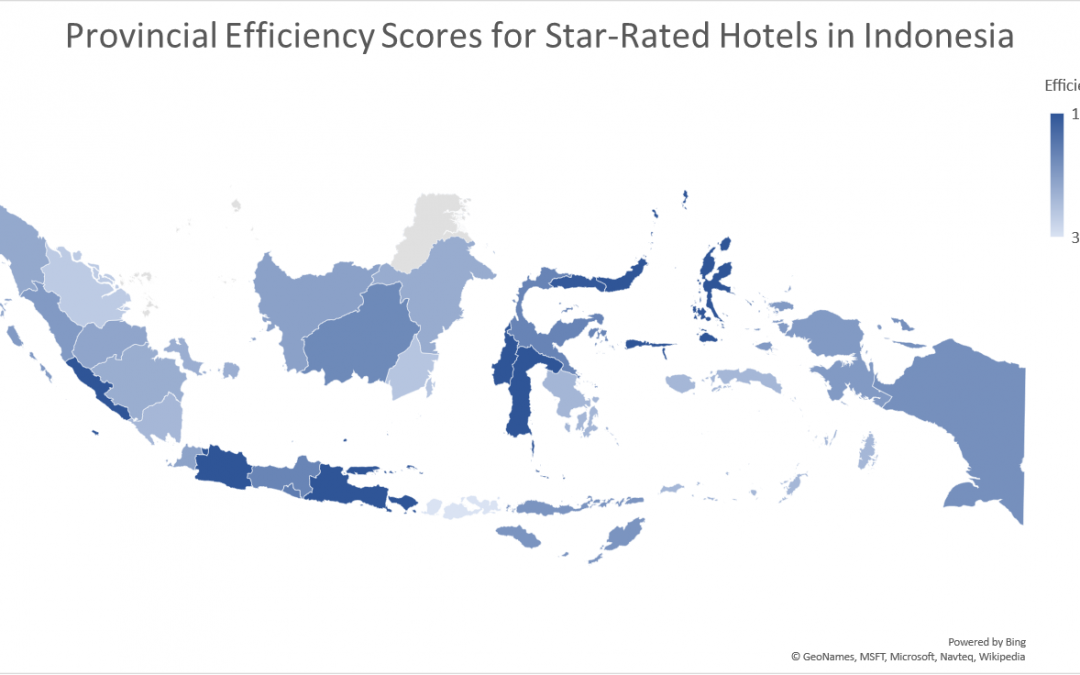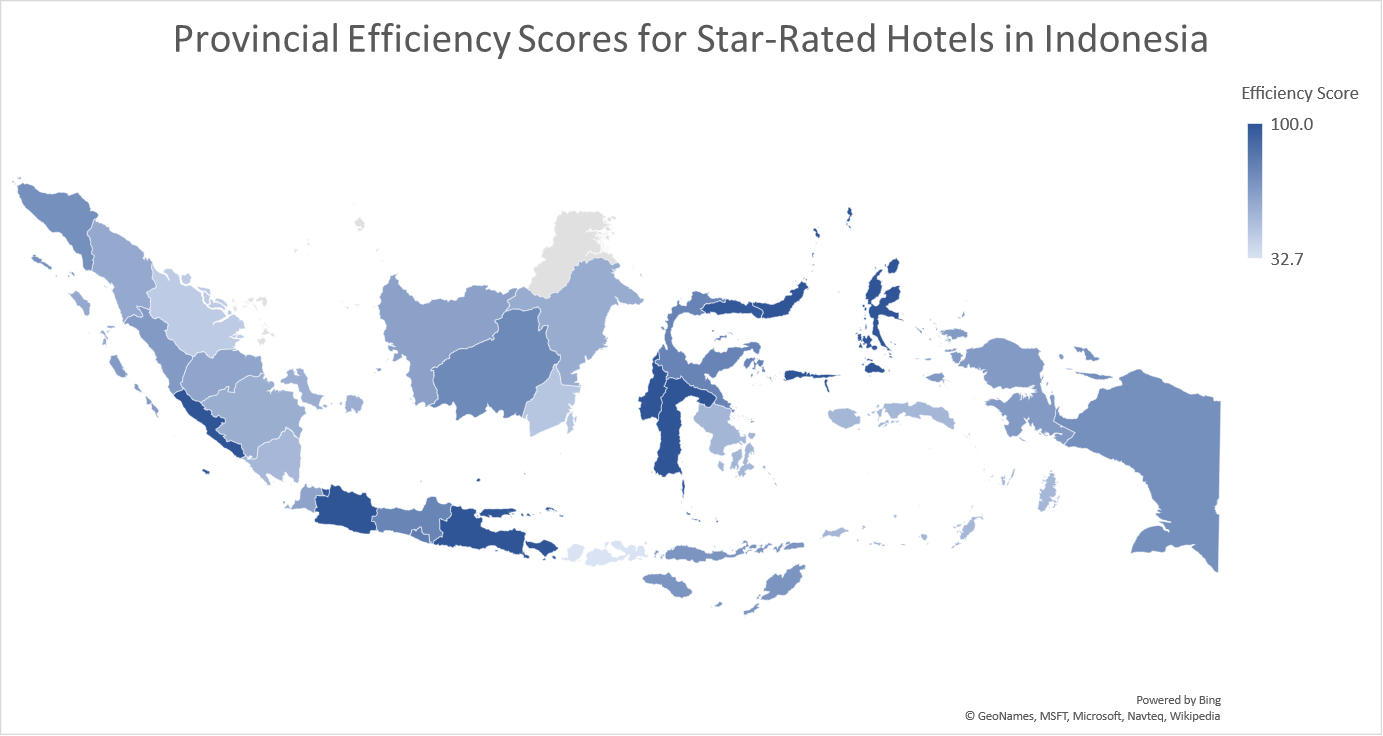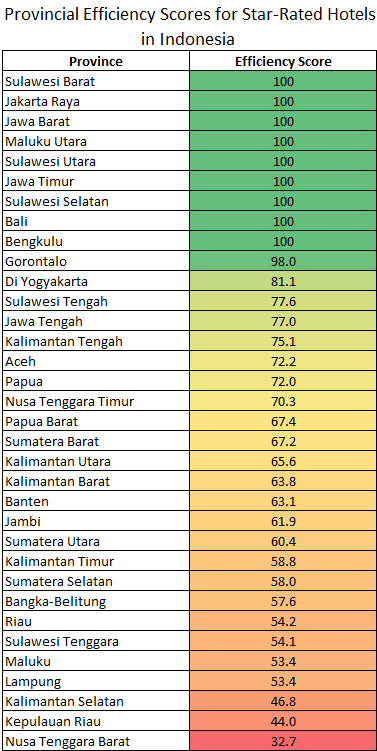The hotel industry in Indonesia has recently seen phenomenal growth with demand for star-rated hotels (room-nights occupied) growing at CAGR 24.7% over the past five years, 2012-2017. Star-rated hotels across the 34 provinces hosted 93.4 million room-nights in 2017, up 16% from 80.4 million in 2016 as illustrated in our recent report, “Short-Term Forecasts of Visitor Arrivals in Indonesia, 2018-2020.” Despite this dramatic growth, there is concern that service standards and productivity levels lag behind the growth in hotel infrastructure, leading to less efficient operations and sub-optimal industry performance. Our analysis therefore examines star-rated hotel productivity across Indonesia’s provinces using the data envelopment analysis (DEA) technique. Download a copy of our article, “Improving the Efficiency & Profitability of Hotel Portfolios”. DEA & Productivity – Brief 2018
DEA is a nonparametric, multifactor productivity analysis tool that evaluates multiple input and output measurements simultaneously and produces one single measure of performance in evaluating the relative efficiencies of decision-making units (DMUs) or hotels in our case. DEA accounts for both controllable and uncontrollable (environmental and situational) factors in evaluating a firm’s productivity/efficiency. It can therefore address management performance.
In this brief analysis, we measure the efficiency of star-rated hotels in Indonesia from a macro perspective by examining provincial data. By using provincial data from a macro perspective, our results provide Indonesian tourism policymakers and hoteliers with an alternative method for gauging star-rated hotel industry performance on a provincial basis. Furthermore, the DEA results could pinpoint areas and resources (inputs) that are in need of improvement and further investigation, in order to enhance product/efficiency and hence deliver better performance.
Using two inputs: number of rooms and total number of workers and two outputs: room occupancy and room nights, we developed an input-oriented DEA analysis of 34 provinces under variable returns to scale (VRS) assumptions. Our analysis reveals that seven provinces (Bengkulu, Bali, Jawa Timur, Sulawesi Selatan, Jawa Barat, Maluku Utara, Sulawesi Utara, Jakarta Raya and Sulawesi Barat) have the highest technical efficiency score relative to other provinces as illustrated in the accompanying map and the table below. The provinces of Nusa Tenggara Barat, Kepulauan Riau, Kalimantan Selatan, Lampung and Maluku have the lowest efficiency scores.
Our analysis provides potential percentage improvements for the inputs (resources) and outputs for each of the inefficient provinces in order that they achieve an efficiency index of 100. In aggregate, the inefficient provinces would need to achieve a reduction of 46% in the number of rooms, a 50% reduction in hotel workers and a 4% increase in occupancy to achieve an efficiency index of 100.
The results are limited by the scarcity of data and by the variables included in the model. While this brief analysis evaluated the performance of the Indonesian hotel industry from a macro perspective, individual hotel owners and managers could examine their hotel portfolios from a micro perspective by assessing the management and operations of individual hotels. Such an analysis is likely to provide detailed insights for enhancing the performance of hotels in Indonesia.
Our Hotel Efficiency & Productivity Benchmarking Services using DEA has radically transformed the way a number of groups have measured performance in the hotel industry.


